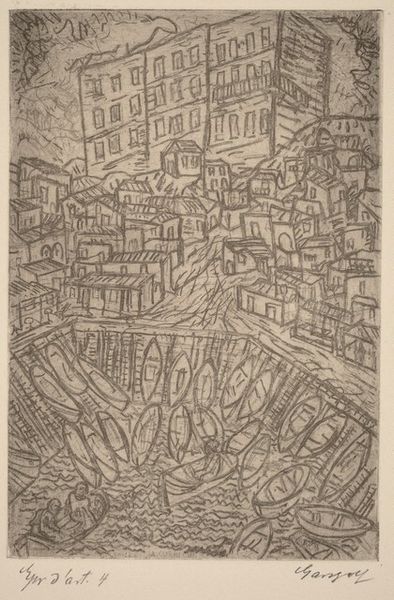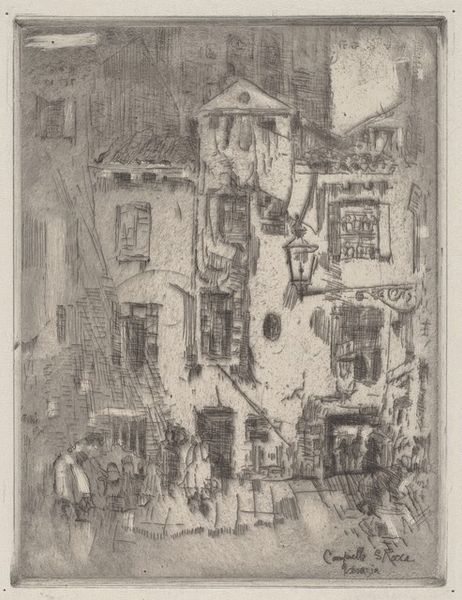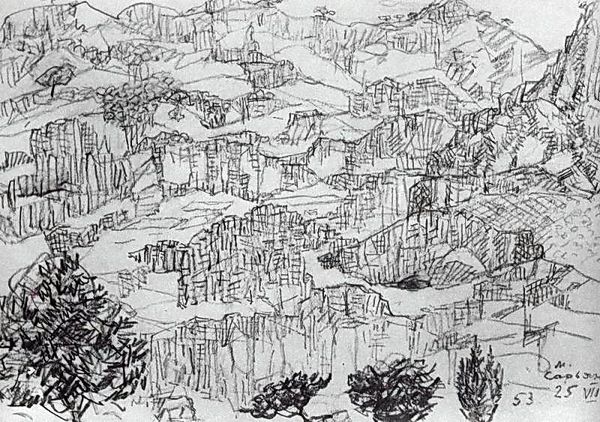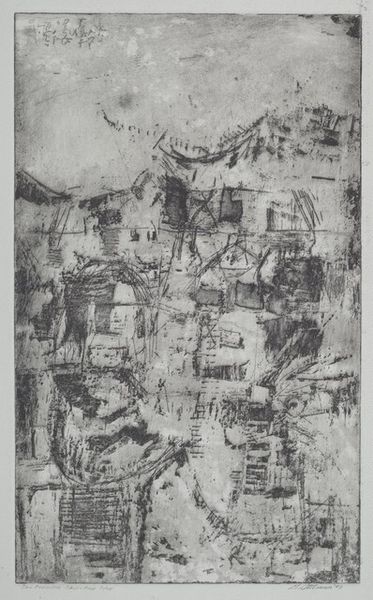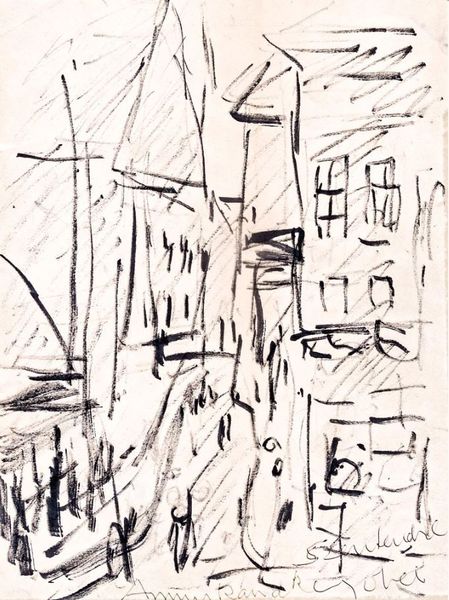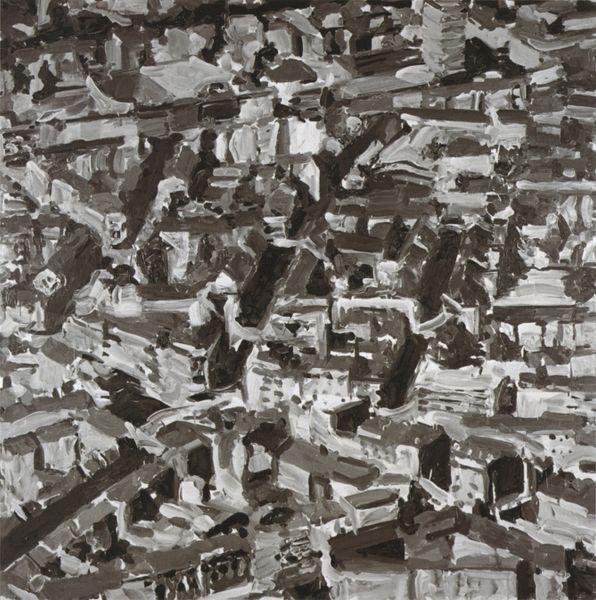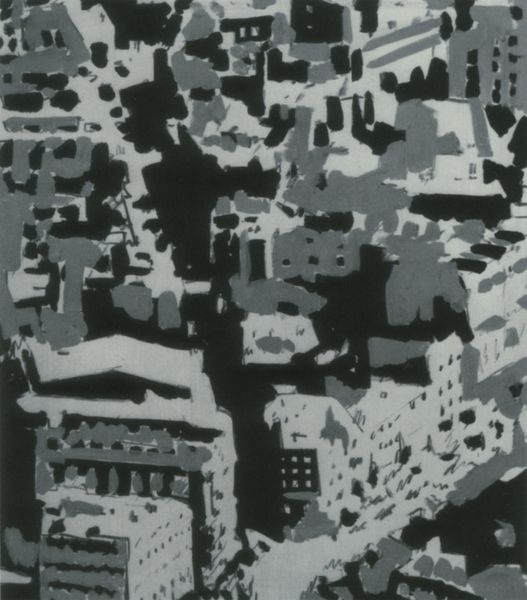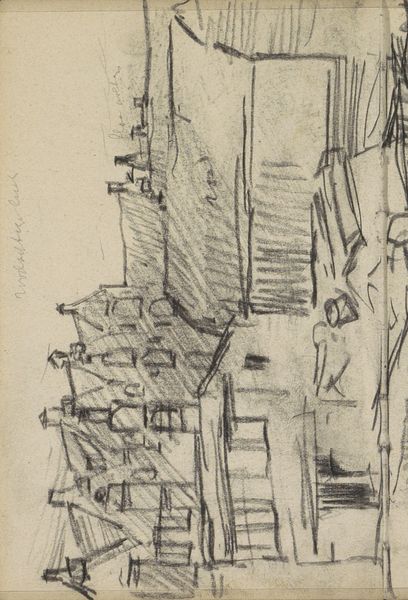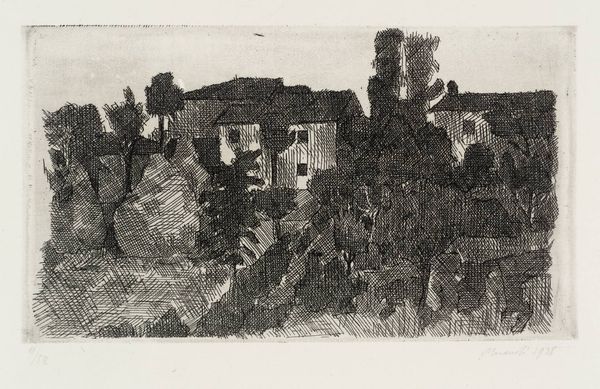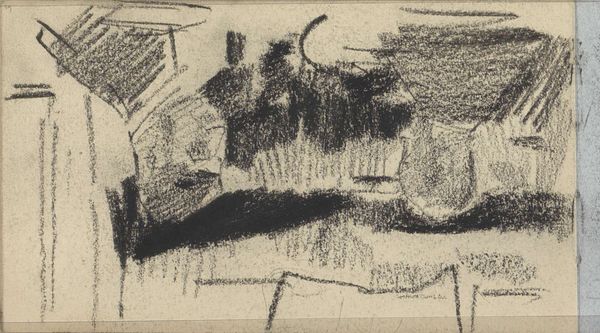
drawing, ink, pen
#
drawing
#
pen drawing
#
line art
#
ink
#
line
#
pen
#
cityscape
#
academic-art
Dimensions: overall: 66 x 48.3 cm (26 x 19 in.)
Copyright: National Gallery of Art: CC0 1.0
Curator: Here we have Red Grooms' "Trogir," a pen and ink drawing created in 1968. What strikes you upon seeing it? Editor: It feels incredibly dense, almost claustrophobic, in the best way. A tapestry of rooftops seemingly spilling toward the viewer. Curator: Precisely. Grooms has created this sense of depth and compression through an intricate network of lines. Note how the varying line weights and densities create a push and pull, almost like a topological map. Editor: And it's fascinating how he uses the roofs as the primary visual motif. Roofs often represent shelter and domesticity. Could this layering of roofs suggest a protective embrace or perhaps the interconnectedness of community? Curator: An interesting perspective. However, from a formal perspective, the roofs create an excellent vehicle for exploring planes and perspective. Notice the linear variations, each line carefully considered to generate a structured image that emphasizes perspective and spatial relationships. Editor: True, but I think that these terracotta roofs, especially en masse like this, resonate with age and tradition. This vantage point grants a birds-eye view that speaks to history, and possibly to the accumulated memory of place. I find myself considering what these structures have witnessed. Curator: While I find those associations intriguing, my eye keeps returning to the meticulous rendering. Look closely at the shading, achieved through careful hatching. There's a level of detail here that is undeniable. The use of such line work structures the entire image. Editor: Still, the artist chose Trogir, a town steeped in history. The labyrinthine structure of the drawing mirrors the physical town itself, and might be symbolic of navigating not only physical space but also the layers of time. Curator: Regardless of our different approaches, I find myself deeply impressed with how such simple means create such a compellingly dense visual field. Editor: Absolutely. "Trogir," with its focused symbolism and intricate details, leaves me with a profound appreciation for how the built environment can act as a vessel for communal identity and experience.
Comments
No comments
Be the first to comment and join the conversation on the ultimate creative platform.
